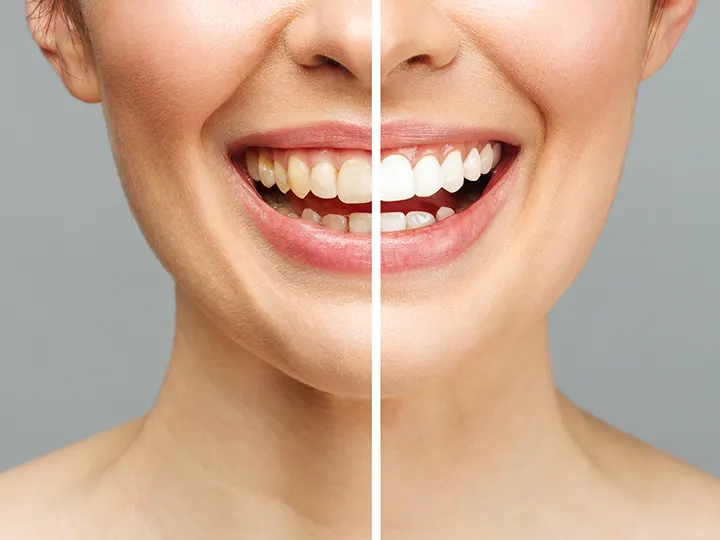
Is teeth whitening a harmful procedure?
Research suggests that a bright smile can make us appear more confident and more successful.
If you are not satisfied with the stains and color changes on your teeth and you have started to feel uncomfortable with your smile, you probably thought of teeth whitening methods. To start from the source of this problem, it is necessary to find out the reason for the color change. Teeth can change color for various reasons:
extrinsic discoloration
Color change caused by the outside; It is caused by food, drink or smoking habits staining your teeth. Coffee, tea, red wine, foods containing dyes, and tobacco can contribute to this type of staining. These stains affect the outside of your teeth. External discoloration can be treated with whitening toothpastes that target the outer stains of the teeth.
Intrinsic discoloration
Intrinsic discoloration is from inside the tooth. You may be experiencing internal discoloration due to medication, childhood illness, infection, dental trauma, or aging. Internal discoloration should be professionally intervened to achieve whiter teeth.
How to whiten your teeth should be decided based on the type of staining you have.
Teeth whitening options
There are many methods and products available to whiten teeth. You may be confused about what to use and which ones are safe. There are three general categories of whitening methods, they are:
- Applied by your dentist
- Given by your dentist for use at home
- Available without a prescription or made at home without your dentist's supervision
You can choose a particular method for your teeth whitening based on one or more factors, including:
- The type of discoloration you have
- Cost of treatment
- Treatment method
- Your age
- Your dental history, fillings and crowns
It's a good idea to talk to your dentist before trying whitening methods. Your dentist will recommend a treatment plan that best meets your needs. Remember that the time it takes to whiten your teeth safely depends on the type of discoloration you have and the method you use to whiten your teeth.
Effect on your teeth
Teeth whitening is considered safe, but you may experience the following side effects from some of the treatments:
tooth sensitivity
Your teeth may become more sensitive after teeth whitening. You may experience this with your first or second treatment, but this will subside over time. Your dentist may recommend relieving sensitivity with products containing potassium nitrate and sodium fluoride gel.
Irritated gums
You may also experience gum irritation. This may be because the whitening product has come into contact with your gums. This side effect should go away after treatment ends.
Remember that you cannot permanently whiten your teeth. You will need frequent whitening treatments for both external and internal color changes. Also remember that these methods are for natural teeth. If you have implants, crowns, bridges or dentures, you will need to talk to your dentist about how you can change the color of your teeth.
It may not be right to try any of the teeth whitening treatments when you have active caries or some dental treatments in progress.
